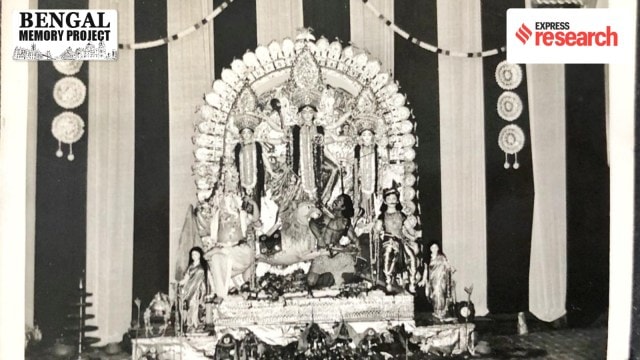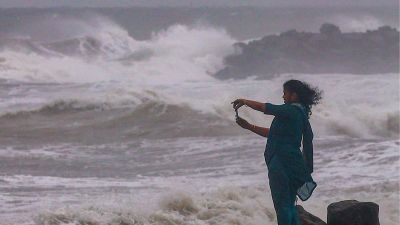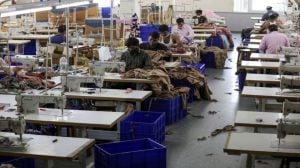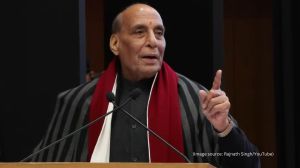It was the holy month of Ashvin in the 1910s. Bengal was revelling in Durga Puja celebrations. But not the Sardar family. Baidyanath Sardar and his younger brother, Arabinda, had little means to celebrate. After the death of their father, Bhuban Mohan Sardar, the family faced significant financial hardships.
“One day, the two brothers decided to visit a neighbouring Durga Puja organised by the Sarkar family,” says Sandeep Sardar, a third-generation member of the family in Kolkata. The Sarkars were a wealthy zamindari (landowning) family and part of the burgeoning middle class in 18th- and 19th-century Bengal, known for organising extravagant Durga Pujas.
That humiliation left a deep scar in the hearts of the two brothers. “That day, Arabinda resolved that they would one day host a puja in their thakurdalan and make it bigger than that of the Sarkar family,” Sandeep says.
This single incident would see the Sardars defy social norms and transcend the circumstances they were born into to establish their own Durga Puja in defiance of exclusion. Today, their thakurdalan on Nalin Sarkar Street in North Kolkata stands open to all, welcoming visitors into a celebration that blends heritage, devotion, and inclusivity.
Ties to Satkhira, Bangladesh
Sandeep’s great-grandfather, Bhuban Mohan Sardar, was a resident of Satkhira in present-day Bangladesh. He had three sons and two daughters. His second son, Baidyanath, born in 1906, was Sandeep’s grandfather. Bhuban Mohan’s passing in 1911 shook the family, but life had to go on.
“The early death of his father, and the fact that his younger brother was a posthumous child, left Baidyanath with tremendous responsibility,” says Sandeep. He was, however, a bright and industrious student. At a prize-distribution ceremony in Satkhira around 1921-22, renowned chemist and educationist Prafulla Chandra Ray (PC Ray) took notice of him. “My grandfather had won most of the medals that year, and PC Ray was impressed,” says Sandeep. Ray encouraged Baidyanath to move to Calcutta and enrol at University College of Science and Technology.
Story continues below this ad
Taking his advice, Baidyanath stayed in a room in a Bengali household near the college, where he taught the landlord’s children in exchange for food and lodging. He eventually graduated with an MSc in Mathematics and was offered a job at Bengal Chemicals by Ray. However, Baidyanath declined the offer, citing the inadequate salary and the fact that he had “too many mouths to feed”.
 The Sardar family with Prafulla Chandra Ray (Express photo)
The Sardar family with Prafulla Chandra Ray (Express photo)
Under Ray’s mentorship, Baidyanath and Balahari Sardar, his elder brother, started a business in Khulna in present-day Bangladesh, manufacturing gauges and adhesive bandages— an enterprise that the Sardar family continues to run to this day.
Arabinda joined the business in Khulna, and around 1951, they also established a base in Calcutta. Yet, says Sandeep, “none had forgotten the humiliation inflicted by the Sarkars”. The memory of being dragged out of the dalan of the Sarkar house lingered, fuelling both hurt and determination: to climb the social ladder, and one day, host a Durga Puja of their own.
A befitting response to the Sarkars
The Sardar brothers worked hard to accumulate both capital and fame. “By 1941, they made enough money to buy the estate of Noonnagar in Azizpur village, in Satkhira district, Khulna, which was mortgaged to the State Bank of India,” says Sandeep.
Story continues below this ad
Thereafter, they built a house there, which he claims was much larger than their nemesis, the Sarkars. It was named ‘Udayachal’. The following year, in 1942, Udayachal held its first Durga Puja. “Post-partition the family would make it a point to return to Satkhira to celebrate the festival,” says Sandeep. Despite the political turmoil in Bengal in the following years, including the Partition, the Sardar family tradition of celebrating Durga Puja in Satkhira continued for another 14 years.
 Udayachal in Satkhira (Express photo)
Udayachal in Satkhira (Express photo)
Sardar narrates the journey from Calcutta to Satkhira. “From Hasnabad, in North 24 Parganas, West Bengal, they crossed the Ichamati River in their own boat and walked to Udayachal, near the riverbank, while the women travelled by palanquin. They had special passes to cross into what became East Pakistan– and were never harassed,” he says.
In 1956, however, a group of Pakistani rangers occupied the kachari bari (office space) of Udayachal. “That year, my grandfathers realised it would be their last Puja in Udayachal. It was time for them to leave East Pakistan,” says Sandeep.
 The idol of Goddess Durga in Udayachal
The idol of Goddess Durga in Udayachal
(Express photo)
Nearly two decades later, shortly after the birth of Bangladesh in March 1971, the Sardar family made a journey from West Bengal to Satkhira to visit their ancestral home. “I was about seven,” recalls Sardar. “We had a convoy of about 6-7 cars, all fitted with Indian flags.”
Story continues below this ad
The family drove to Hasnabad and from there took a ferry to reach Satkhira. “Having obtained prior permission from the Indian Border Security Force and the Bangladesh government, we were allowed to travel without a passport,” he says.
Yet, they were only allowed a few hours at the property—too short a time to reconnect with the home they once cherished. “While my generation was born in Calcutta,” says Sardar with a smile, “my father’s generations were both born in Udayachal”.
Preserving tradition in a new nation
In Calcutta, the Sardar brothers purchased a house in 1951. “It was called Sukhatara, located on 7 Nalin Sarkar Street, Shyam Bazar,” notes Sandeep. The house had been purchased from Shesh Prakash Ganguly, the son-in-law of Maharaja Manindra Chandra Tagore, a wealthy Bengali landlord. The thakurdalan of the house was built in 1956, the year they left Satkhira.
The family carried more than just tradition across the border—they brought their craftsmen too. “Until 35 years ago, I remember the same idol maker would come to Calcutta from Satkhira to make our idol. The same descendants of dhaaki (musicians) too,” notes Sandeep. With changing geopolitics and the passing away of the older generation, much has changed now, he admits.
Story continues below this ad
Shania Sardar, Sandeep’s younger daughter, interrupts: “Because of these changing artists, one year the lion is leaner, the other the buffalo is shorter, and sometimes Mahishasur’s six packs are missing from the idol!”
 The thakurdalan at Sukhatara (Express photo)
The thakurdalan at Sukhatara (Express photo)
Interestingly, in keeping with age-old norms, the idols for bonedi bari (elite household) pujas are made on their home premises, by a pre-selected group of artisans. “Our thakur (idol) is ekchala (a single frame) with daak er saaj (decorative ornaments) that remain the same from the beginning,” says Sandeep.
“There was a time,” he adds, “when 50 people were living in that house—eating together, sleeping together, children going to school together. We had a minibus bought by my grandfather for our school”.
With time, however, the family decided to leave Sukhatara and live separately in individual houses. Durga Puja, however, still draws the family back to the house. While initially, each of the nine cousins bore the expense of the Puja on a rotational basis, now, the total cost is shared by all the cousins.
Story continues below this ad
Yet, some elements remain untouched by time: a group of domestic helpers who travel from Odisha each year to help host the celebration; the face of Goddess Durga, preserved in a Plaster of Paris cast since 1942; and the rituals, which Sandeep insists have been passed from one generation to the next.
“While most lost their tradition after moving across borders, we have managed to host and celebrate the same puja,” says Sandeep. The family comes together each year, welcoming both the rich and the poor into their premises. Once denied entry to a puja because of their social status, the Sardars now host one of Kolkata’s most revered Durga Pujas.



 The Sardar family with Prafulla Chandra Ray (Express photo)
The Sardar family with Prafulla Chandra Ray (Express photo) Udayachal in Satkhira (Express photo)
Udayachal in Satkhira (Express photo) The idol of Goddess Durga in Udayachal
The idol of Goddess Durga in Udayachal The thakurdalan at Sukhatara (Express photo)
The thakurdalan at Sukhatara (Express photo)





























